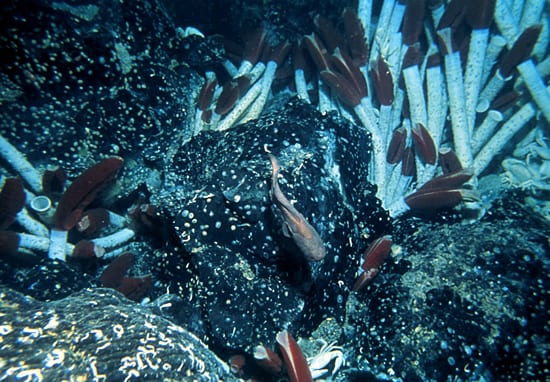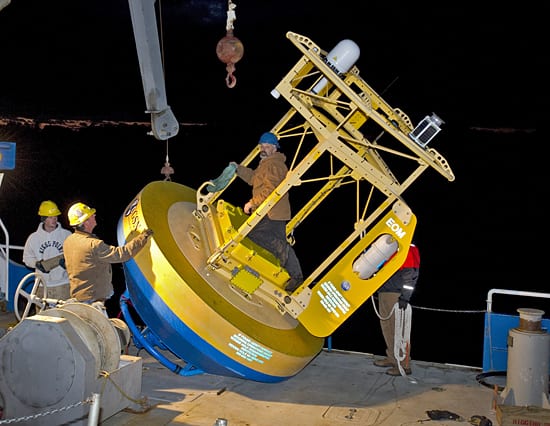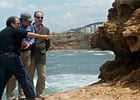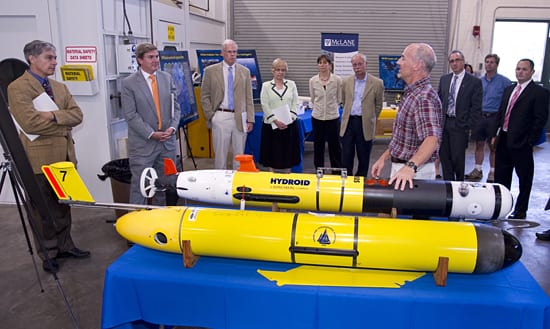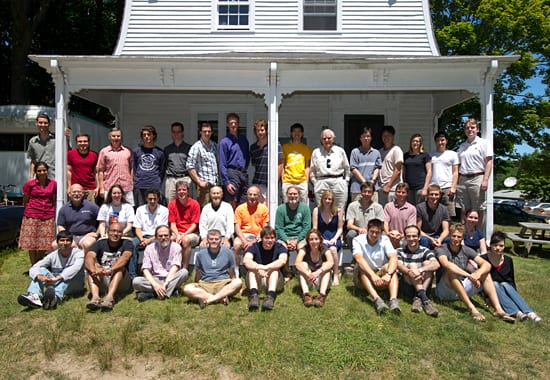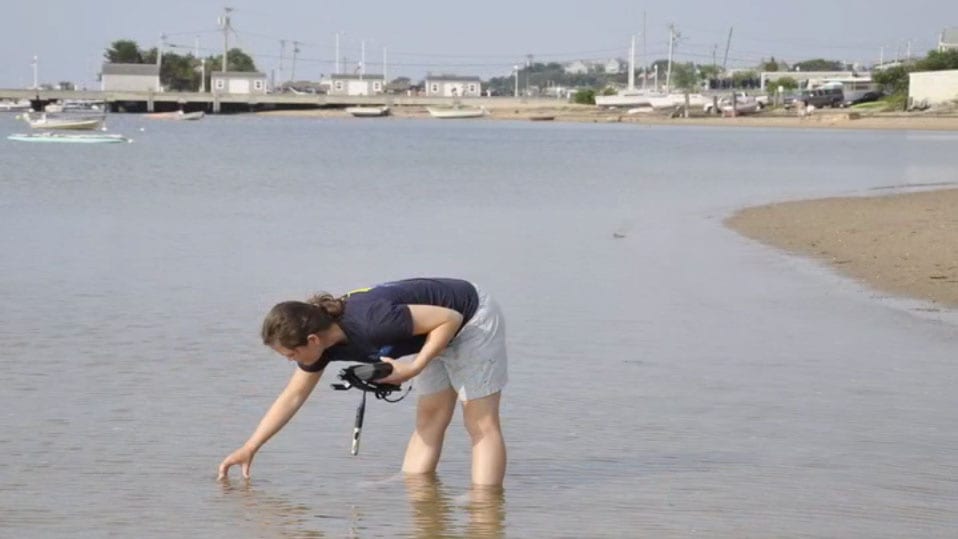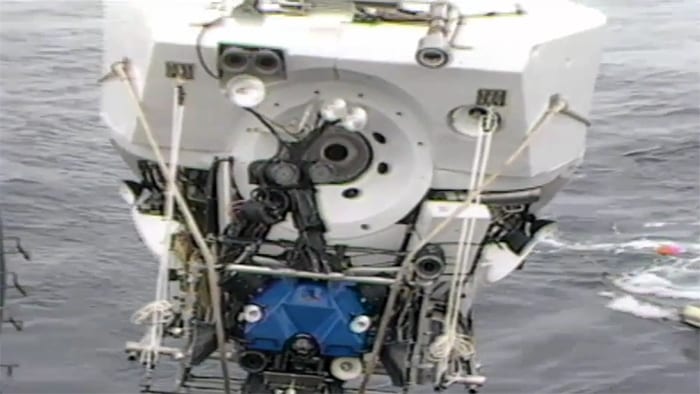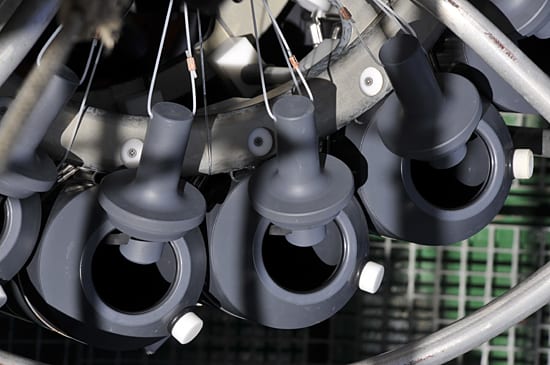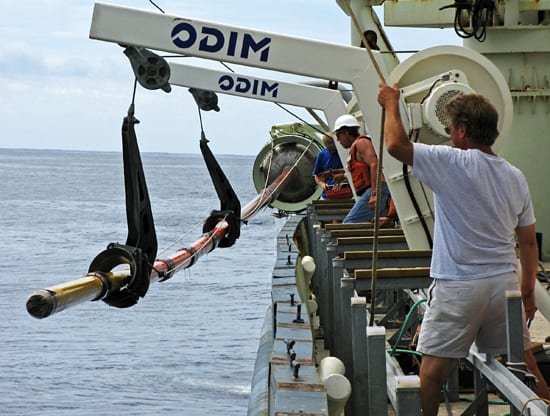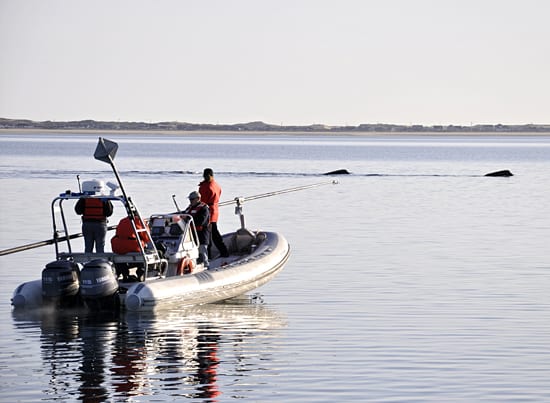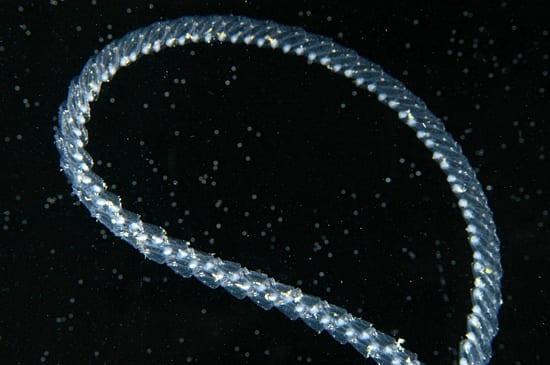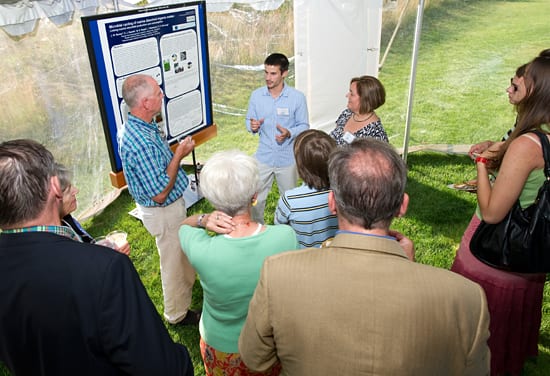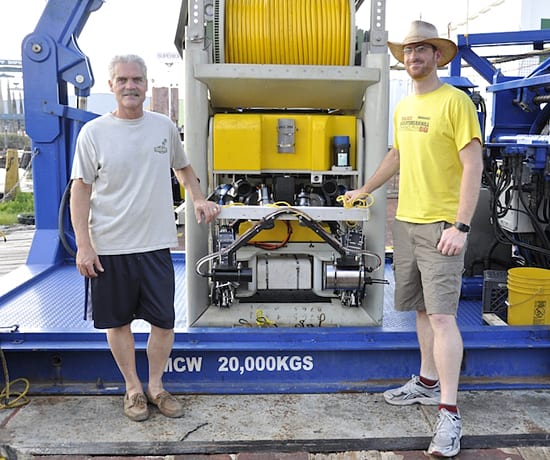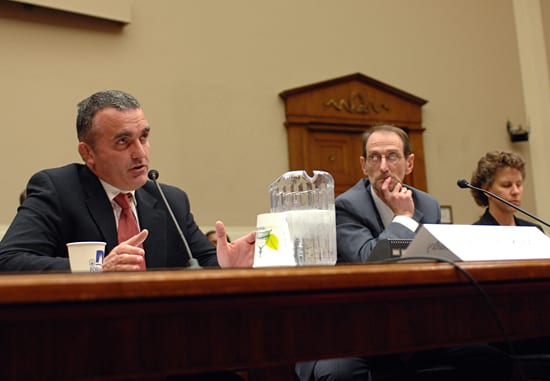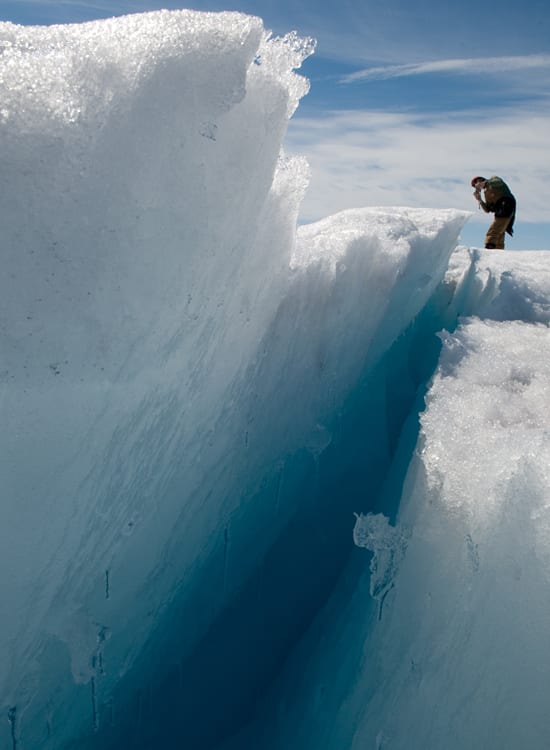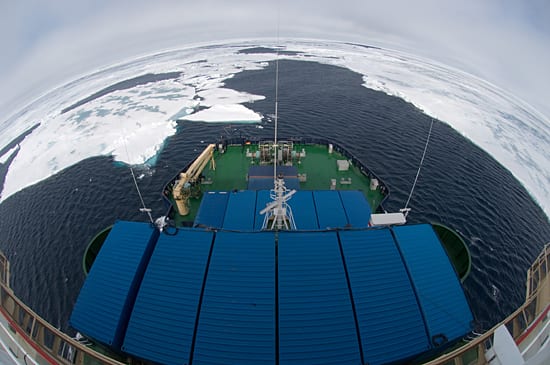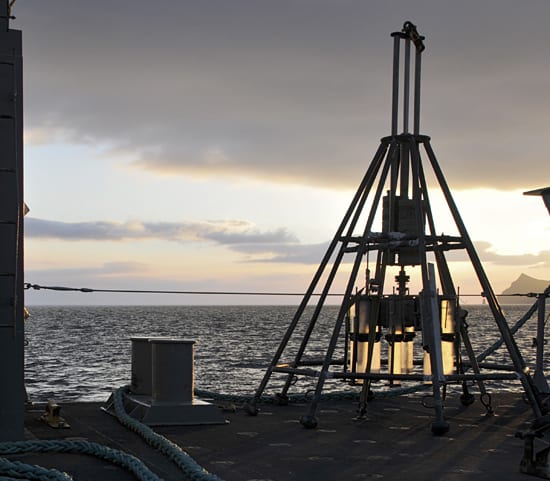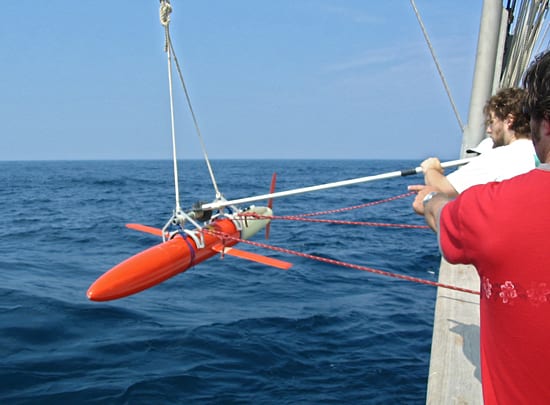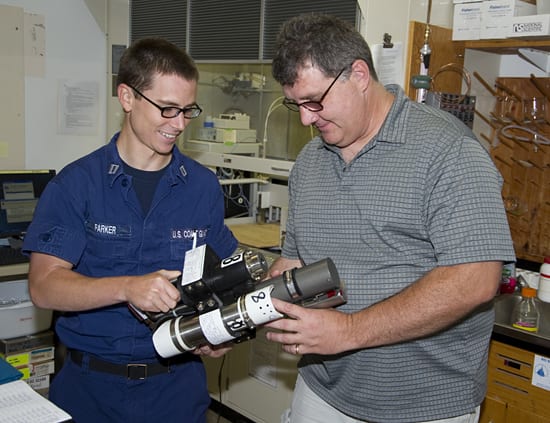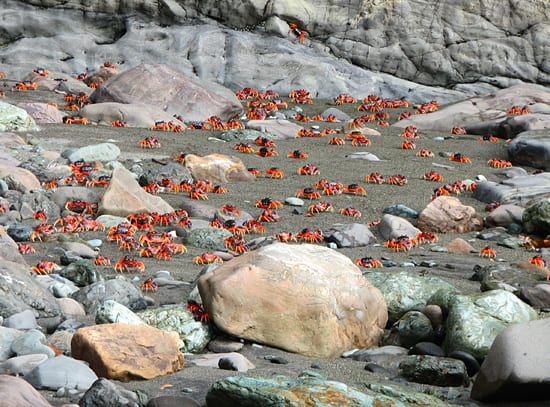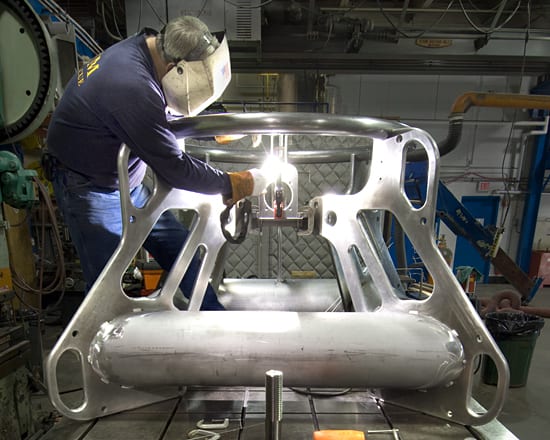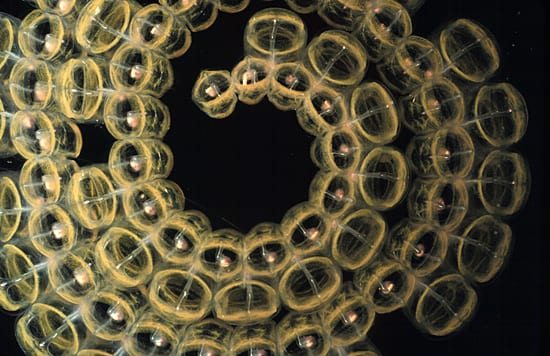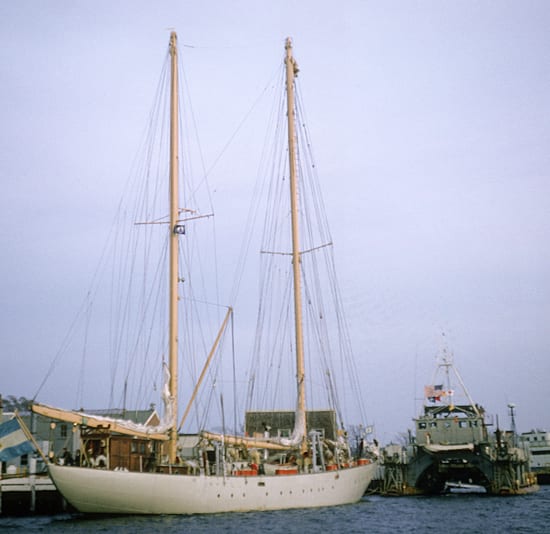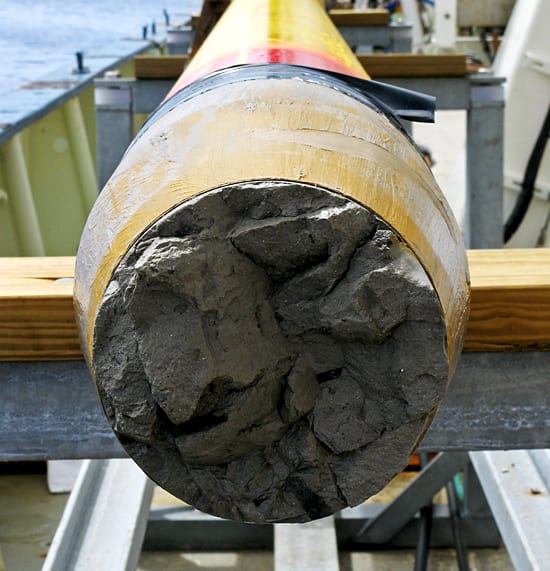Multimedia Items
Near Galapagos, 1979, a new world found
Before the discovery of hydrothermal vents in 1979, no one expected to see abundant life in the deep sea, where darkness and cold temperatures reign. But chemical-rich fluids gushing from…
Read MoreIt’s a buoy for OOI and new WHOI laboratory
The first buoy designed for the Ocean Observatories Initiative (OOI) is loaded onto the RV Connecticut for testing ops south of Nantucket earlier this year. The OOI program is one…
Read MoreEarthquake Research
WHOI research and economic impacts
WHOI senior engineer Mike Purcell briefs state officials Pat Larkin, executive director of the John Adams Innovation Institute, and Greg Bialecki, Massachusetts Secretary of Housing and Economic Development, on WHOI’s…
Read MoreA fluid environment
Participants in the 2010 Geophysical Fluid Dynamics (GFD) program gather on the Walsh Cottage porch for a group photo. The GFD Program, which began in 1959 at WHOI, is an…
Read MoreSun, Sand, Waves…and Bacteria?
Elizabeth Halliday spent her summer at the beach, but she wasn’t swimming or sunbathing. Instead, the MIT/WHOI Joint Program student traveled to Provincetown three times per week to collect samples…
Read MoreImaging Titanic
Bill Lange, Director of WHOI’s Advanced Imaging and Visualization Laboratory (Woods Hole Oceanographic Institution) Originally published online August 1, 2010
Read MoreWhat is it?
Water-collecting cylinders called Niskin bottles stand ready, spring-loaded caps open at both ends. They are most often attached to a CTD rosette sampler–a frame holding a circle of bottles around…
Read MoreCore product
Aboard the Knorr, from foreground, WHOI researchers Bill Curry and Jim Broda, along with Rolf Ambjornsen of the Norwegian marine services company Odim, help retrieve the first sediment ever collected…
Read MorePlaying tag
To learn more about what whales do when they dive beneath the surface, scientists use a digital acoustic recording tag, or D-tag. The small device, designed and developed at WHOI,…
Read MoreDeep Sea Jewelry?
Transparent as glass and just as fragile, a meter-long chain of salps loops into a crystal necklace for an Antarctic Neptune. These gelatinous animals filter food out of the ocean…
Read MoreAn afternoon of science
MIT/WHOI Joint Program student in Biology, Jamie Becker, (center with light blue shirt) discusses his research with guests at the recent Afternoon of Science, during the science poster reception under…
Read MoreRapid trip to measure oil droplets
WHOI Senior Scientist Cabell Davis (left) and Joint Program graduate student Nick Loomis flank an ROV mounted with a small digital holographic camera before a rapid research trip in the…
Read MoreGiving testimony on the Gulf oil spill
Marine chemist Christopher Reddy, Director of the WHOI Coastal Ocean Institute and specialist on the fate of petroleum in the marine environment, is studying the Deepwater Horizon oil spill, part…
Read MoreNew crack
Ian Joughin of the Polar Science Center Applied Physics Lab at the University of Washington (UW), examines a large, angular crack in the ice during a 2008 expedition to Greenland.…
Read MoreA fish-eye lens view
In this fish-eye lens view, the icebreaker Oden is headed north into what will be thicker ice during a 2007 expedition to the Arctic Seafloor. At the top of the…
Read MoreDusk over the Bering Sea
At rest: A multicorer, an oceanographic sampler that drives cylindrical tubes into the seafloor to take multiple sediment samples at once, sits on the deck of the R/V Thomas G.…
Read MoreSpray glider studies the Gulf spill
Graduate students in the MIT/WHOI Joint Program practice deploying a Spray glider. A Spray glider, a sensor-equipped autonomous underwater vehicle, was recently deployed to the Gulf of Mexico to gather…
Read MoreOil sample arrives at WHOI
WHOI researchers are making major contributions to efforts to monitor and characterize effects of the Deepwater Horizon oil spill in the Gulf of Mexico. In June, WHOI researchers took a…
Read MoreA torrent of crabs
After a six-month dry season in coastal Panama, the first rains bring masses of bright red land crabs boiling out of their burrows in the forest and scrambling across the…
Read MoreA whale of an anchor
WHOI welder Tony Delane works on the mooring anchor framework for a multifunction node (MFN) and buoy system that will help researchers monitor the activity of North Atlantic right whales,…
Read MoreGolden spiral
Salps are planktonic filter-feeders — each one a tireless vacuum continuously clearing phytoplankton cells from the sea by filtering water through a mucus net as it swims. These marine animals…
Read MoreEl Austral and Lulu
El Austral, formerly RV Atlantis, at the Woods Hole Oceanographic Institution (WHOI) dock with RV Lulu. Atlantis was the first WHOI research vessel and the first ship built specifically for…
Read MoreGoing deep
Muddy sediment from beneath the seafloor pokes out of one of the first long cores collected in 2007 by the then-new long corer sampling system on the research vessel Knorr.…
Read More
